Traditional Russian Easter paskha, a festive dish made of cottage cheese (tvorog), butter, dried fruits and vanilla. This paskha recipe is healthy and incredibly delicious. Serve it as a spread for sweet Easter bread (kulich) or as a dessert.

Today I share a well-loved recipe of Russian Easter paskha, a festive dish made of cottage cheese (tvorog), butter, dried fruits and vanilla. I remember my grandmother making it for Easter, and I was looking forward to it every year. It’s very delicious and goes perfect with kulich, a sweet Easter bread.
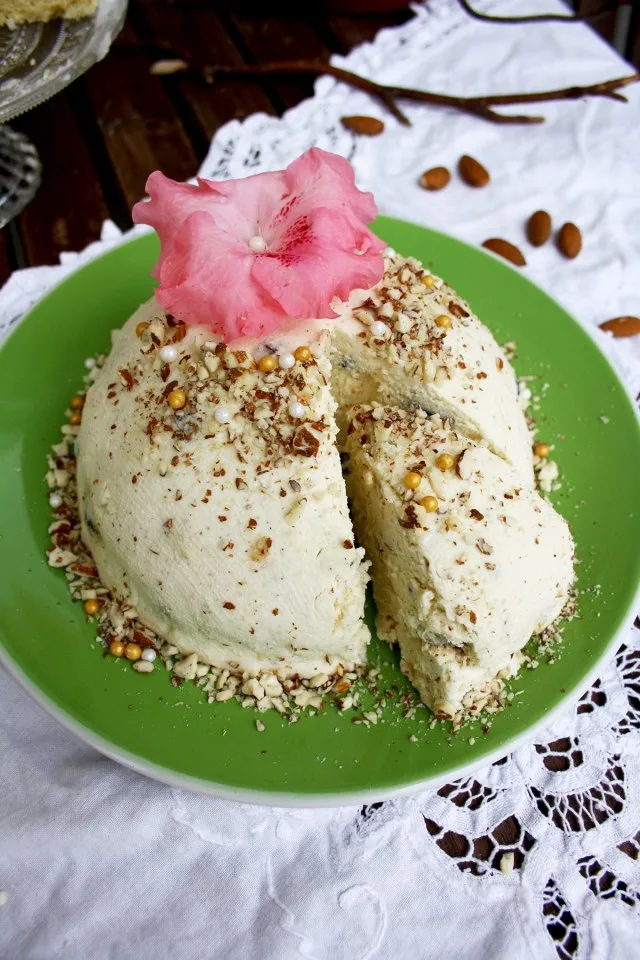
Russian Easter menu is always very broad, with some traditional must-have dishes like Russian deviled eggs, naturally dyed and beautifully decorated Easter eggs, kulich and paskha. In former times it was common to cook up a 48-course Easter menu, one course for each day of fasting!
Nowadays, it’s a bit less extensive, but the tradition to serve a big variety of nutritious and wholesome dishes with a lot of dairy products and eggs still exists. Russian Easter is all about excessiveness, delicious food and dyeing tons of eggs with onion skins.
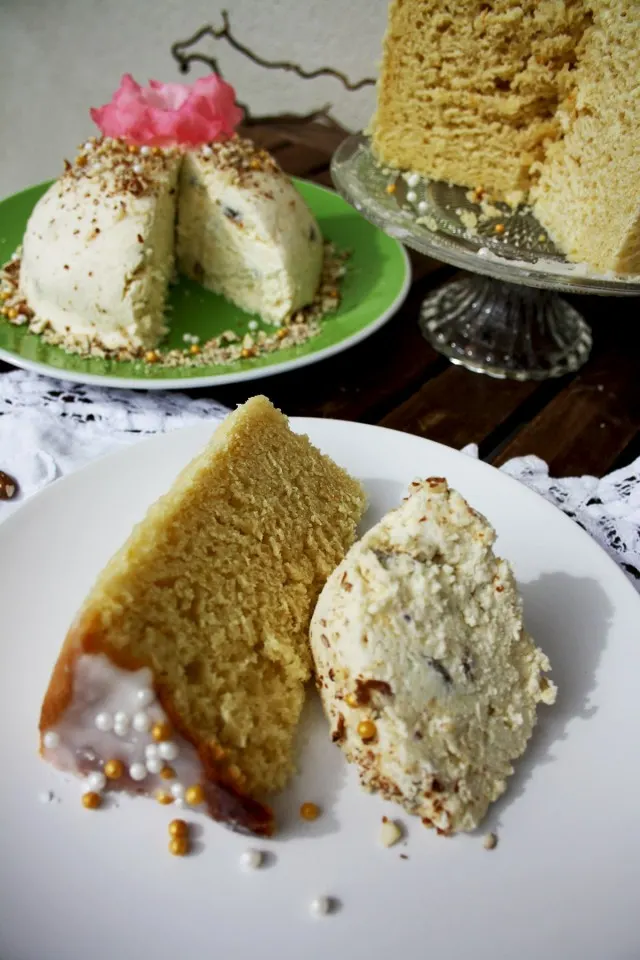
“Paskha” literally means “Easter” and is a part of every Easter festive table. Paskha is usually molded into a pyramid, symbolizing the tomb of Christ. I didn’t have a pyramid-shaped mold, so I made it round instead.
The taste is close to a cheesecake without the crust, but is more rich and the texture is more dense.
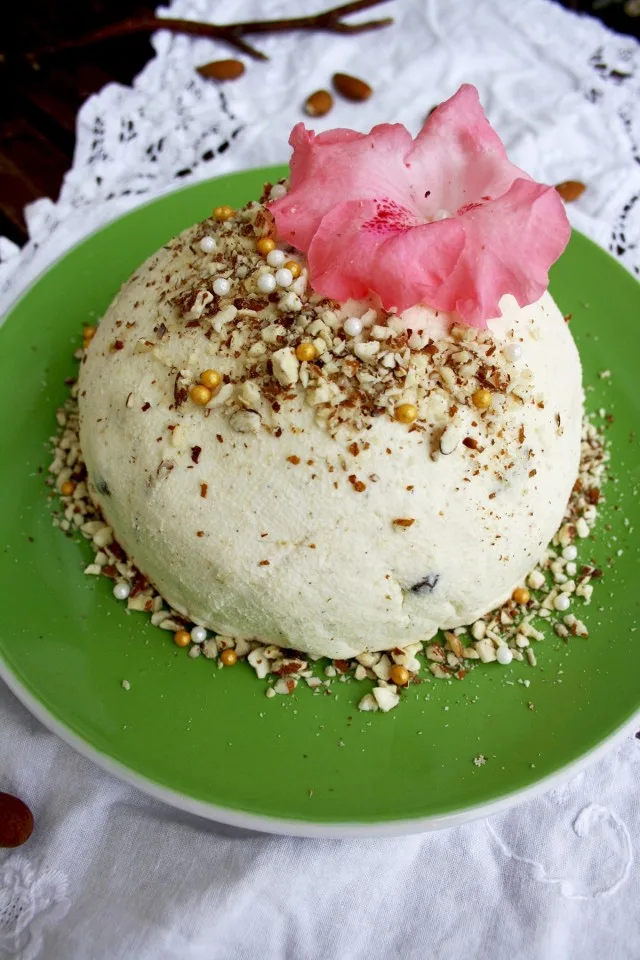
I tried to make my paskha as light as possible, so I skipped eggs and heavy cream, which are usually present in traditional recipes. I added raisins but you can feel free adding your favorite dried fruits or candied citrus.
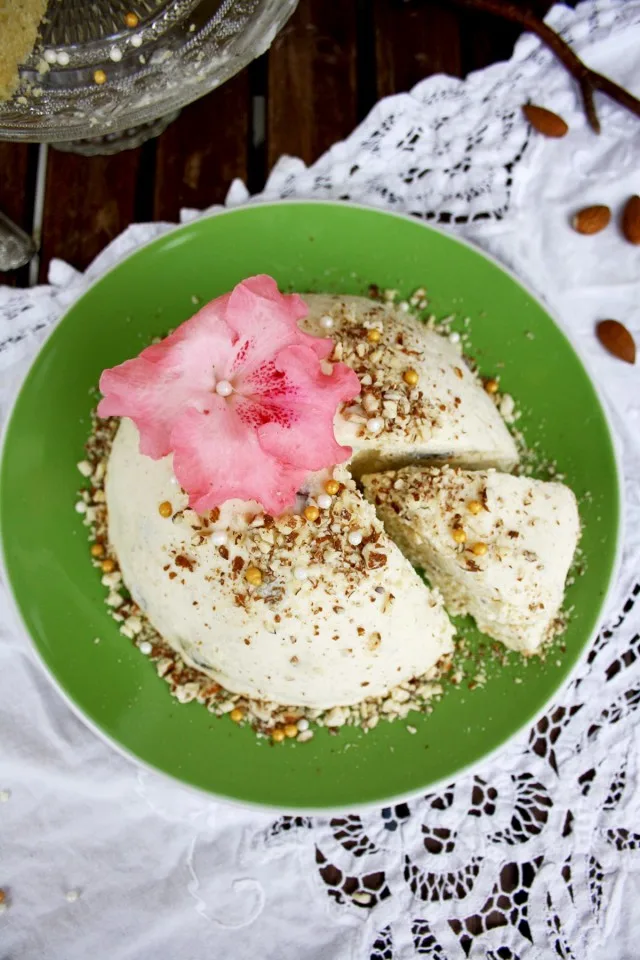
Making paskha may look complicated but believe me, it isn’t. The process is similar to making fresh cheese: cottage cheese is wrapped into a piece of cheesecloth, hung to dry over a bowl, then the sweetening agent is added and hung again over night. Final part (and the most fun) is to give it a desired shape and to decorate it with chopped nuts and flowers or whatever is on your mind.
Traditionally, the letters X and B are carved on paskha, which stands for the Cyrillic version of the Easter acclamation “Christ is risen!” (Христос Воскрес). The top of the dish can be also decorated with a candle, but in this case make sure to lay a piece of paper on top, so that the wax doesn’t drop on your food.
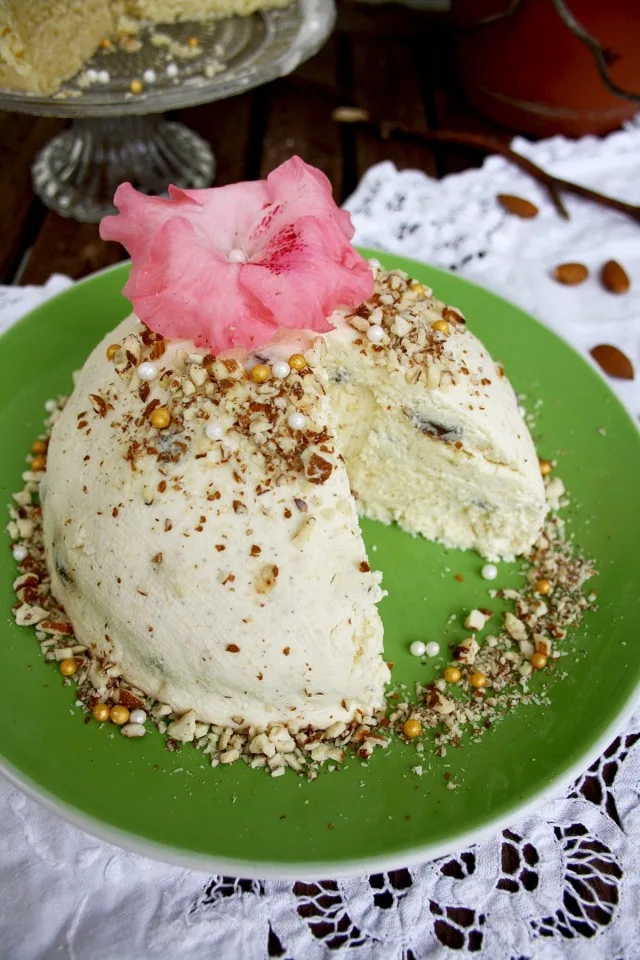
Serve paskha along with kulich – traditional sweet Easter bread, lots of dyed and decorated hard-boiled eggs along with Russian deviled eggs and small appetizers like Russian mushroom caviar, mini buckwheat pancakes or traditional Russian pancakes.
Here is my version of paskha for you to enjoy this Easter! What is your favorite Easter recipe? Leave a comment below!
Russian Easter Paskha
Ingredients
- 500 g or 2 1/4 cups cottage cheese
- 60 grams or 1/3 cup raisins (or other dried fruits, chopped if needed)
- 1/2 lemon zest and juice
- 1 vanilla pod
- 80 grams or 1/2 cup brown sugar
- 50 grams or 1/2 cup or 1 stick unsalted butter at room temperature
- 250 g or 1 cup mascarpone
- 3 tablespoons chopped almonds to garnish, or other nuts
- 2 teaspoons sugar pearls to garnish
Instructions
- Lay out cheesecloth over a strainer, put cottage cheese on it and knot the ends or use a rubber band to secure the cheesecloth. Hang it over a bowl for 2 hours.
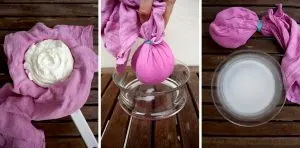
- Meanwhile, mix raisins with lemon zest and juice in a small bowl. Cut the vanilla pod lengthwise and scrap the seeds with a teaspoon. Add them to the raisins. In a separate large bowl, combine brown sugar with butter.
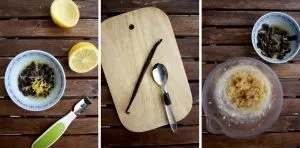
- When the cottage cheese it ready, squeeze it well to get extra moisture out. Add the raisins mixture, mascarpone and cottage cheese to the bowl with butter and stir well until combined. Put the paskha back in the cheesecloth and secure the ends as before. Hang it over a bowl overnight.
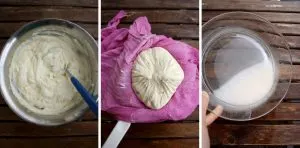
- When it's ready, you will have about 110 ml or 1/2 cup of moisture in a bowl. Use it for other dishes, like pancakes or bread. Use a strainer as a mold. Put the opened cheesecloth with paskha in a strainer, press it with the plate on top, turn over and remove the strainer and the cheesecloth. Decorate with chopped almonds or other nuts, sugar pearls, candles, flowers, candid fruits or as desired. Enjoy!
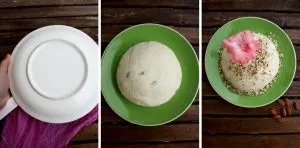
Notes
Nutrition
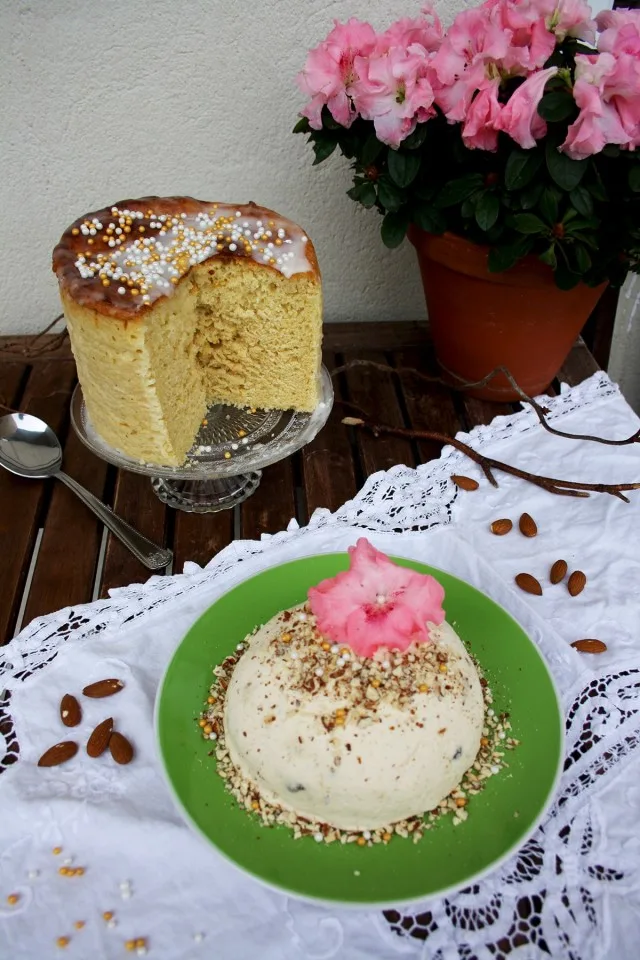
Other Easter Recipes You’ll Love:
- Kulich – Sweet Russian Easter Bread
- Natural Egg Dye with Onion Skins 5 Ways
- Asparagus Quiche with Sweet Potato Crust
- Easy Healthy Cheesecake in a Jar
- The Best Rustic Ricotta Spinach Quiche

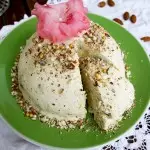

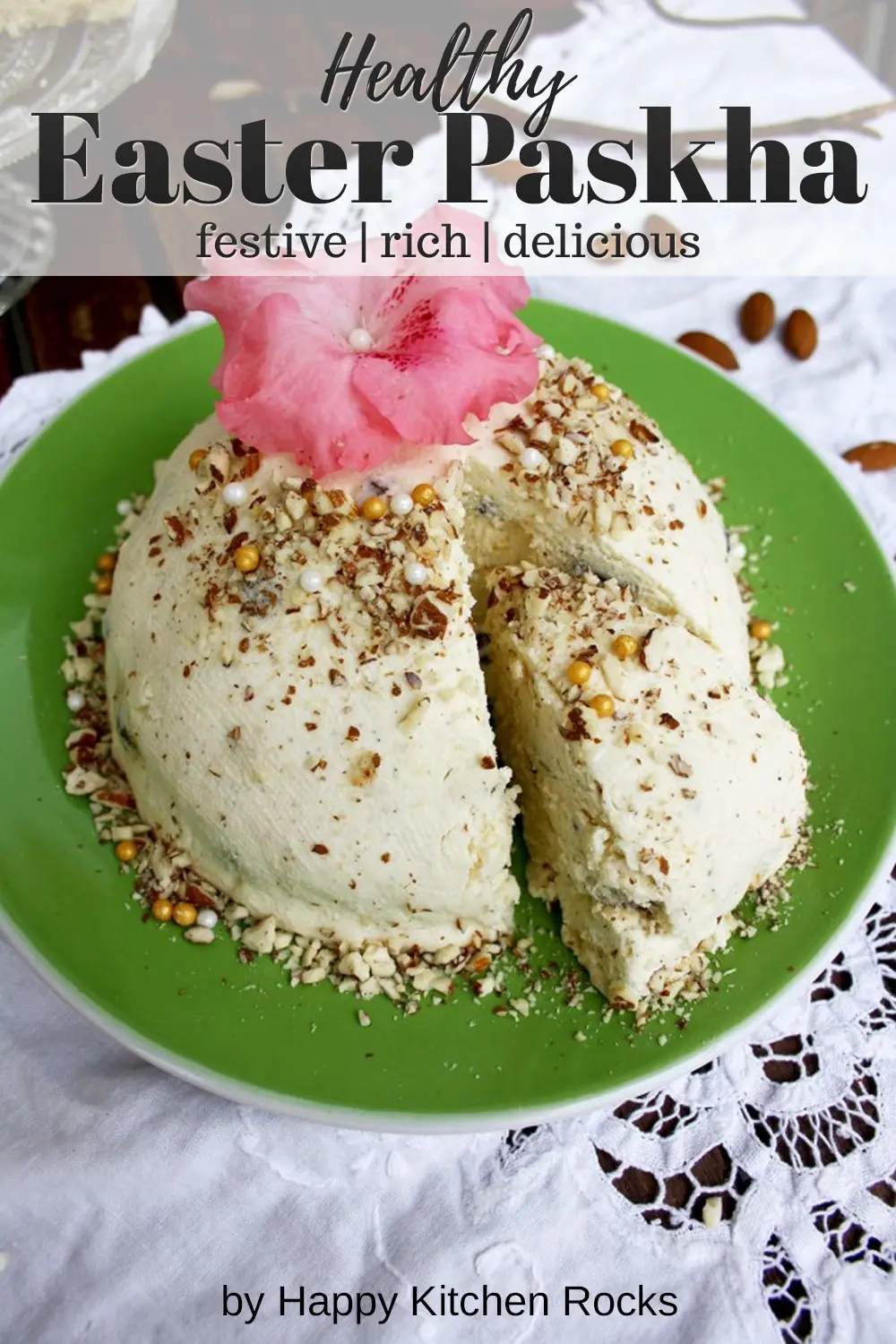

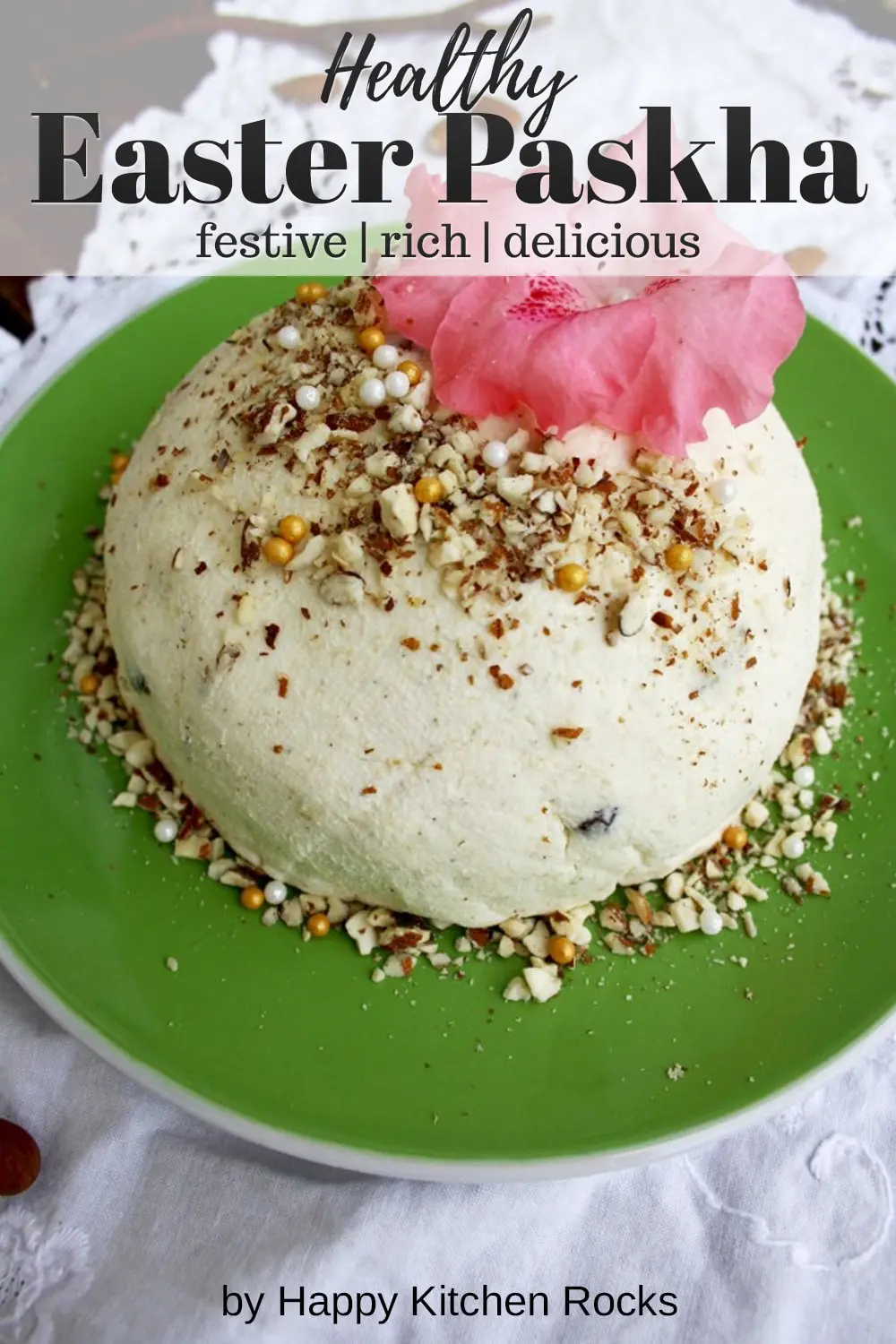

Tomtil
Monday 29th of April 2019
I made this recipe with ricotta cheese, and it is absolutely delicious. Creamy, not overly sweet and easy to make. My husband who tried Paskha for the first time loved it, and said that it's just like a cheesecake but better. Definitely will be making it every year if not sooner.
Elena Szeliga
Monday 29th of April 2019
I'm so happy you and your husband enjoyed the recipe! Thank you for stopping by and leaving your feedback - it means a lot to me!
Maiya
Wednesday 24th of April 2019
Hi this is Maiya again, I forgot to ask, in my last comment, how much liquid is expected to come out of the cottage cheese on the first hanging? Also when it’s done draining should the consistency be crumbly or still soft? Sorry for such detailed questions, I’ve had some pascha cheese disasters in the past and just want to make sure I do it right;)
Elena Szeliga
Wednesday 24th of April 2019
Hi Maiya, the goal here is to make it as firm as possible, so depending on the firmness of your cottage cheese you'll get anywhere from 1/3 to 2/3 cup after the first hanging. The firmer your cottage cheese is, the less liquid you'll get from it. Just make sure to squeeze it well after hanging. It should crumble a bit but not too much. Hope that helps!
Maiya
Tuesday 16th of April 2019
Hi, I plan on making this for Pascha, but was wondering what kind of cottage cheese you used?
Elena Szeliga
Tuesday 16th of April 2019
Hi Maiya, I'm glad you will give this recipe a try! I used the type that you can buy in your local Russian shop (grainy farmer's cheese). If you are not able to find it, use quark or any type of non-salted fresh cheese. I would appreciate your feedback on this recipe!
Zee Gimon
Thursday 7th of April 2016
"Russian paskha" and "kulich" are the same thing - the one you've got under the name of "kulich." I have never heard of cottage-cheese "paskha" (granted, there is a version of cottage-cheese dough for the kulich, but never just cheese). It could've been some discreet tradition your grandma was from, but I've lived all my life in CIS and I've never seen it.
Elena Szeliga
Thursday 7th of April 2016
Hey Zee, thanks for stopping by! I actually have a recipe for kulich on my blog as well. We are usually eating it together with paskha for Easter. I agree, that paskha is less popular than kulich for some reason. Which is a pity, because it's very delicious!
Zee Gimon
Thursday 7th of April 2016
Nevermind. Found the recipe elsewhere as well - weird. Have never heard of it.
IGOR @ COOKING THE GLOBE
Saturday 26th of March 2016
Great post and fantastic looking dish. Enjoyed reading it! :)
Elena Szeliga
Saturday 26th of March 2016
Thank you, Igor! :)